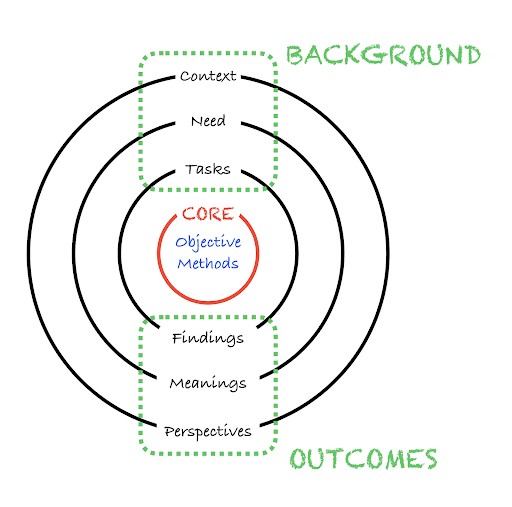How to Write an Abstract For a Poster Presentation Application
Attending a conference is a great achievement for a young researcher. Besides presenting your research to your peers, networking with researchers of other institutions and building future collaborations are other benefits.
Above all, it allows you to question your research and improve it based on the feedback you receive. As Sönke Ahrens wrote in How To Take Smart Notes "an idea kept private is as good as one you never had".
The poster presentation is one way to present your research at a conference. Contrary to some beliefs, poster presenters aren't the ones relegated to oral presentation and poster sessions are far from second zone presentations; Poster presentations favor natural interactions with peers and can lead to very valuable talks.
The application process
The abstract submitted during the application process is not the same as the poster abstract. The abstract submission is usually longer and you have to respect several points when writing it:
- Use the template provided by the conference organization (if applicable);
- Specify the abstract title, list author names, co-authors and the institutions in the banner;
- Use sub-headings to show out the structure of your abstract (if authorized);
- Respect the maximum word count (usually about a 300 word limit) and do not exceed one page;
- Exclude figures or graphs, keep them for your poster;
- Minimize the number of citations/references.
- Respect the submission deadline.
The 3 components of an abstract for a conference application
Most poster abstract submissions follow the classical IMRaD structure, also called the hourglass structure.
To make your abstract more memorable and impactful, you can try the Russian doll structure. Contrary to IMRaD, which has a more linear progression of ideas, the Russian doll structure emphasizes the WHY and WHAT. It unravels the research narrative layer by layer, capturing the reader’s attention more effectively.
Your abstract should be something the reviewer wants to open in order to discover the different layers of your research down to its core (like opening a Russian doll or peeling an onion). Then, it should be wrapped up elegantly with the outcomes (see figure below) like dressing the same Russian doll.
Hence, to design the best Russian doll, I recommend Jean-Luc Doumont's structure as detailed in his book Trees, Maps and Theorems that I adapted in 3 main components:
1. Background. The first component answers to the WHY and details the motivations of your research at different levels:
- Context: Why now? Describe the big picture, the current situation.
- Need: Why is it relevant to the reader? Describe the research question.
- Tasks: Why do we have to do this way? Review the studies related to your research question and emphasize the gap between the need and what was done.
2. Core. The center component answer to the HOW and consists in describing the objective of your research and its method:
- Objective: How did I focus on the need? Detail the purpose of your study.
- Methods: How did I proceed? Describe briefly the workflow (study population, softwares, tools, process, models, etc.)
3. Outcomes. The final component answers to the WHAT and details the take-aways of your research at different levels:
- Findings: What resulted from my method? Describe the main results (only).
- Meanings: What do the research findings mean to the reader? Discuss your results by linking them to your objective and research question.
- Perspectives: What should be the next steps? Propose further studies that could improve, complement or challenge yours.
It's worth noting that this structure emphasizes the WHY and the WHAT more than the HOW. It is the secret of great scientific storytelling.
The illustration below provides a clearer understanding of the logical flow among the three components and their respective layers. Note that, if authorized, sub-headings can be used for each section mentioned above.

4 tips to help get your abstract qualified
Here are some tips to give yourself the best chance of success for having your poster abstract accepted:
- Start by answering questions. It is very hard for the human brain to create something totally from scratch. Hence, allow the questions detailed above to guide you in creating the first path to explore.
- Write first, then edit. Do not try to do both at the same time. You won't get the final version of your abstract after your first try. Be patient, and "let your text die" before editing it with a fresh new point of view.
- "Kill your darlings''. Not everything is necessary in the abstract. In Stephen Sondheim's words, West Side Story composer, "you have to throw out good stuff to get the best stuff". You will be amazed at just how surprising and efficient this tip is.
- Steal like an artist. As suggested by Austin Kleon's book title, get inspiration from others by reading other abstracts. It can be very helpful if you struggle finding punchy phrasing or transitions. I'm not referring to plagiarism, only getting good ideas about form (and not content) that can be adapted and used in your abstract.
Next steps
When you get accepted, it's time to design your poster board and prepare your pitch. Pick your favorite graphics software and bring your abstract to life with figures, tables, and colors. We have written an article on how to make a scientific poster, do not hesitate to take a look.

